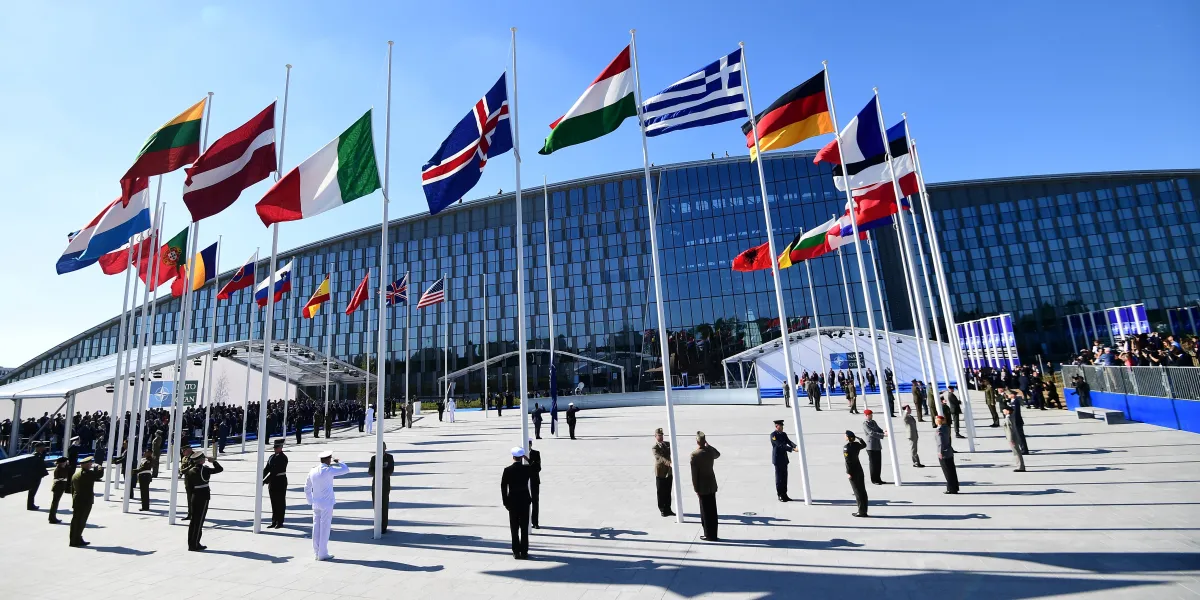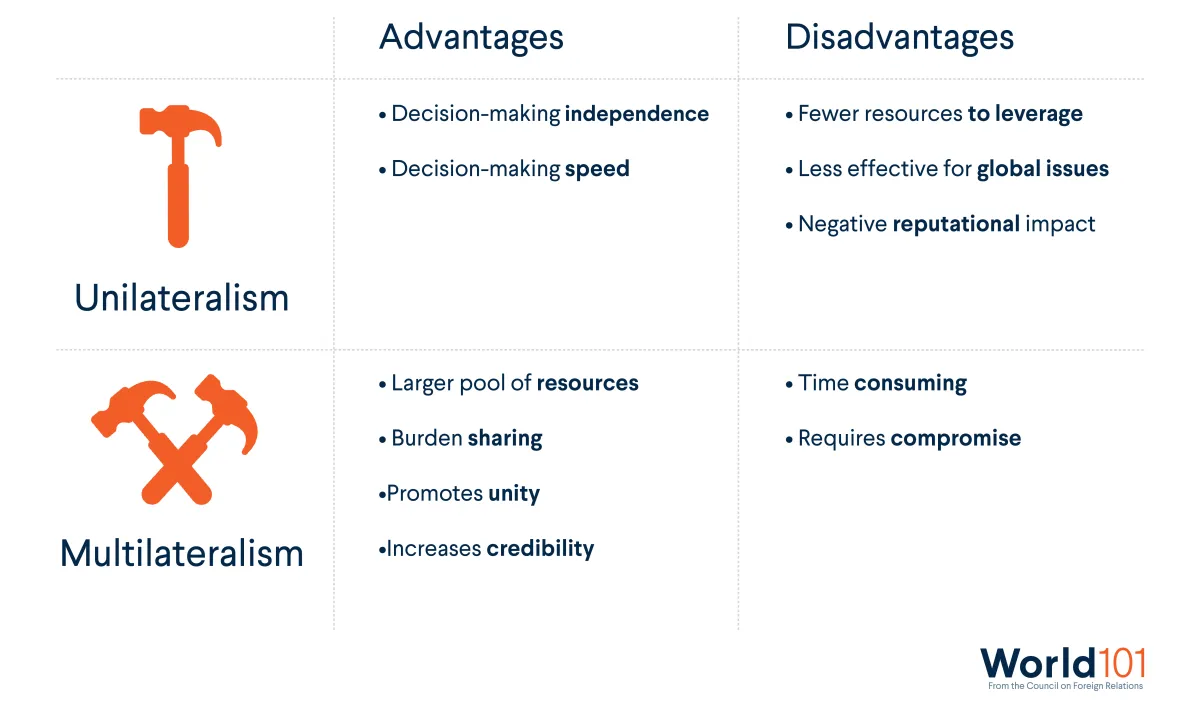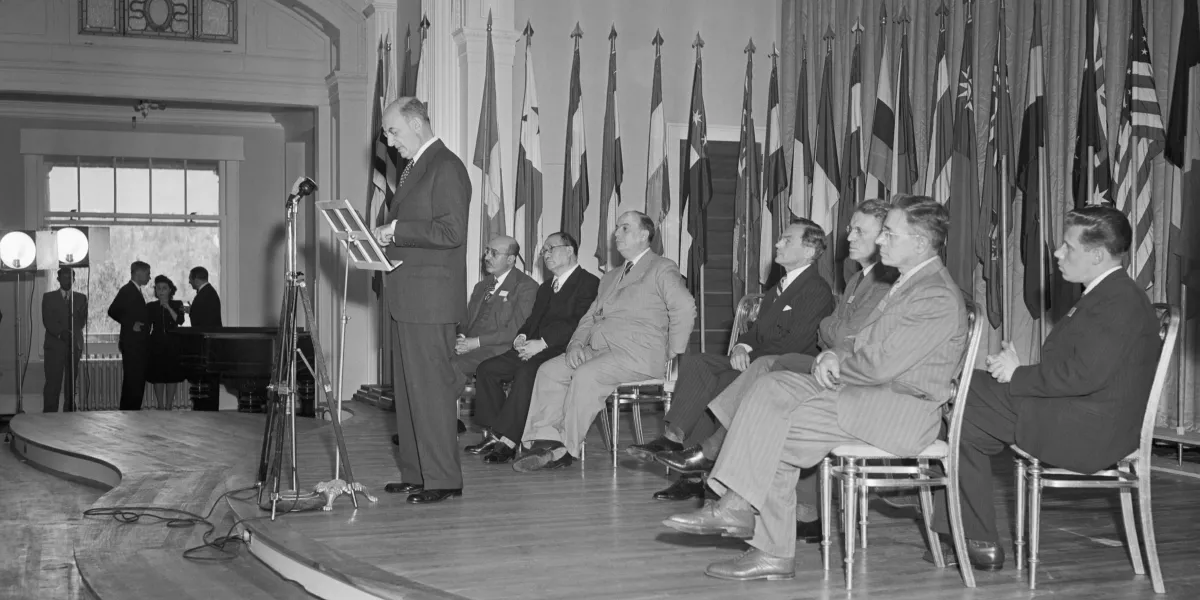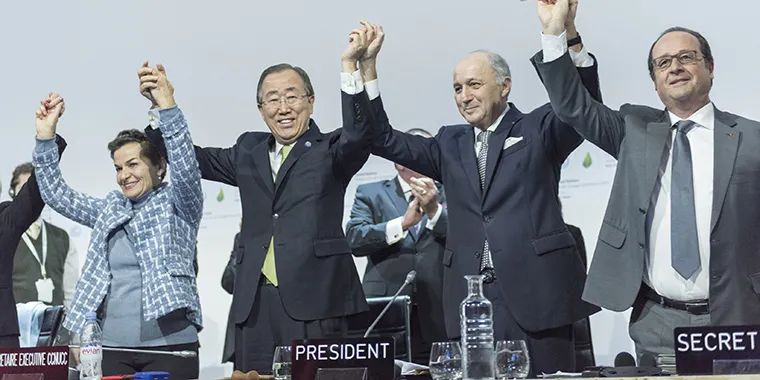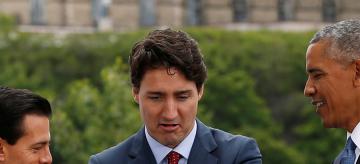Unilateralism Versus Multilateralism
What is unilateralism? What is multilateralism? In this free resource on foreign policy, explore why leaders address some challenges independently and others as part of a team.
Imagine you are the leader of a country. When facing a problem, do you decide to work with other countries’ leaders or go it alone? Both strategies have their advantages and disadvantages.
What is multilateralism?
Working together with other countries—known as multilateralism—can allow nations to more effectively tackle transnational challenges, like climate change and global pandemics. These problems are complex and often require collective solutions. Multilateralism allows countries to pool resources, enabling them to share the burden of complex and costly operations. Working with others can also give actions greater domestic and international legitimacy, garnering them more support. On the other hand, acting independently—known as unilateralism—can allow countries to quickly pursue their goals. Unilateralism allows countries to retain more freedom of action.
Multilateralism does not necessarily mean the entire world works together on an issue. Indeed, it’s rare for nearly two hundred countries to agree on even the most basic topics. More often, multilateralism takes the form of smaller coalitions like the Group of Seven, a bloc of powerful democracies that meets annually to discuss the critical issues of the day. Military alliances, such as the North Atlantic Treaty Organization (NATO), are another form of multilateralism. Countries can also choose to form new, ad hoc groups to handle specific challenges, bringing together “coalitions of the willing.”
Multilateralism is also not exclusively global—many countries cooperate regionally to solve problems. In fact, a growing trend of regionalism has been an important piece of modern history alongside global efforts.
What is unilateralism?
Through unilateralism, countries pursue their foreign policy goals independently. Doing so allows governments to act fast without having to compromise or discuss their plans with other countries. Equally important, unilateralism does not necessarily mean countries advance their goals while disregarding other countries. Many countries defend human rights, promote security, and combat climate change on their own—especially when they believe other nations do not take those issues seriously enough.
Unilateralism vs. multilateralism
Unilateralism and multilateralism are not binary options; rather, those two approaches exist on a spectrum. Take the example of a seemingly unilateral action like a drone strike. Although they appear to be led by one country, those actions often rely on behind-the-scenes multilateral cooperation in the form of agreements to fly over foreign airspace or to operate military bases in other countries.
Most countries shift between degrees of unilateralism and multilateralism depending on the issue at hand. Neither approach is inherently right or wrong; both have benefits and drawbacks.
Examples of unilateralism and multilateralism
After World War II, the United States led the creation of a series of international organizations and agreements to foster peace and prosperity and deter disruptive unilateral actions. Those multilateral institutions and agreements—including the United Nations, the General Agreement on Tariffs and Trade, the World Bank, and the International Monetary Fund—became the linchpin of the so-called liberal world order. These organizations were designed to address a variety of issues, including security, trade barriers, monetary policy, and poverty alleviation. Today, most countries in the world are members of those international institutions.
Despite today’s challenges to the liberal world order, many experts maintain that some degree of multilateralism is required to tackle global issues. Problems such as climate change, cybercrime, terrorism, nuclear proliferation, and pandemics require a level of multilateral attention.
Take the 2015 Paris Agreement, for example. The pact to combat climate change—a crisis that transcends national borders—brought together 195 governments to curb harmful emissions. The Paris Agreement exists on the fundamental understanding that no single country can address climate change alone. Still, that approach faces challenges, such as disagreement among leading countries on climate policy particulars. Moreover, countries have failed to meet many of their ambitious targets multilaterally.
The accord, however, also demonstrates multilateralism’s limitations. Some climate experts have criticized the agreement for not going far enough to address the threat of climate change. Others highlight that the agreement relies solely on pledges from individual countries rather than binding commitments. No mechanism holds accountable major polluters, including the United States—which temporarily withdrew from the Paris Agreement in 2020—and China.
Activity: Which foreign policy approach would you choose?
Let’s look at a few real-world debates over whether to pursue a unilateral or multilateral approach to thorny foreign policy issues. Follow two historical case studies to understand both sides of the argument and decide which approaches you would favor as a policymaker. Use the interactive quiz below to dive into how you would respond to the Gulf War and the Iraq War.
